Welcome to our comprehensive False Ceiling Guide, where we will delve into various design hacks that transform your space into a shining oasis. These ceilings, also known as drop ceilings or suspended ceilings, have become increasingly popular due to their ability to add elegance, charm, and functionality to any room. In this guide, we’ll cover everything you need to know about false ceilings and how to utilize them effectively to enhance the aesthetics and functionality of your living or working space.
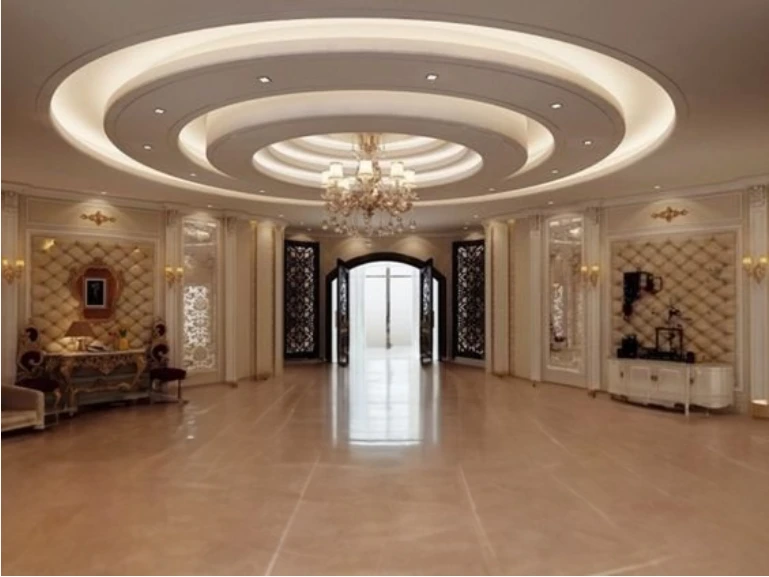
Table of Contents
#1 Understanding False Ceilings and Their Benefits
False ceilings, also known as drop ceilings or suspended ceilings, are a popular interior design element offering numerous benefits for residential and commercial spaces. This article explores the concept of false ceilings and delves into the advantages they bring to enhance a room’s overall aesthetics and functionality.
These ceilings are secondary ceilings suspended below a room’s primary structural ceiling. They create a multi-level ceiling structure, leaving a gap or plenum space between the original roof and the false ceiling. This plenum space serves practical purposes, such as concealing electrical wiring, ducts, pipes, and air conditioning systems. The false ceiling is typically constructed using a grid system, and ceiling tiles are installed within this framework.
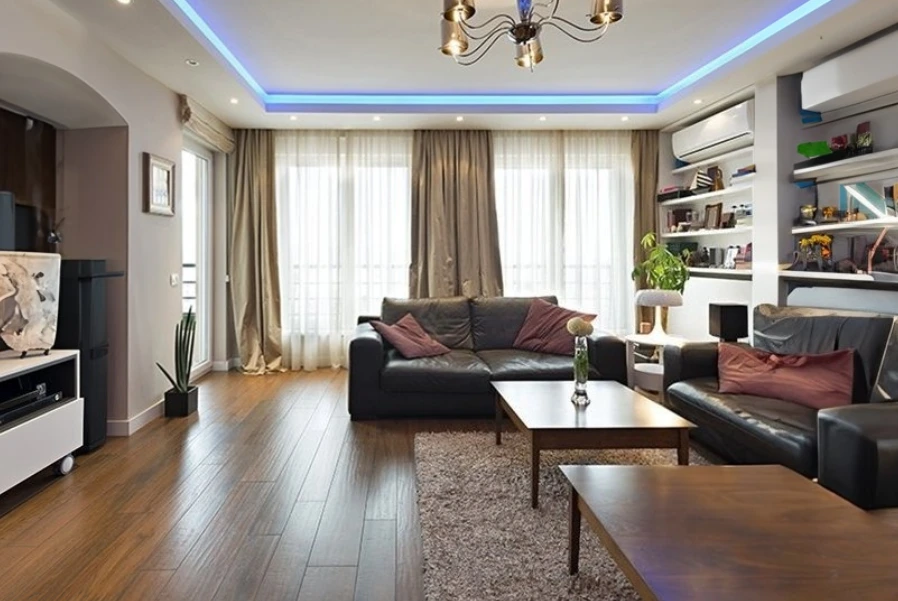
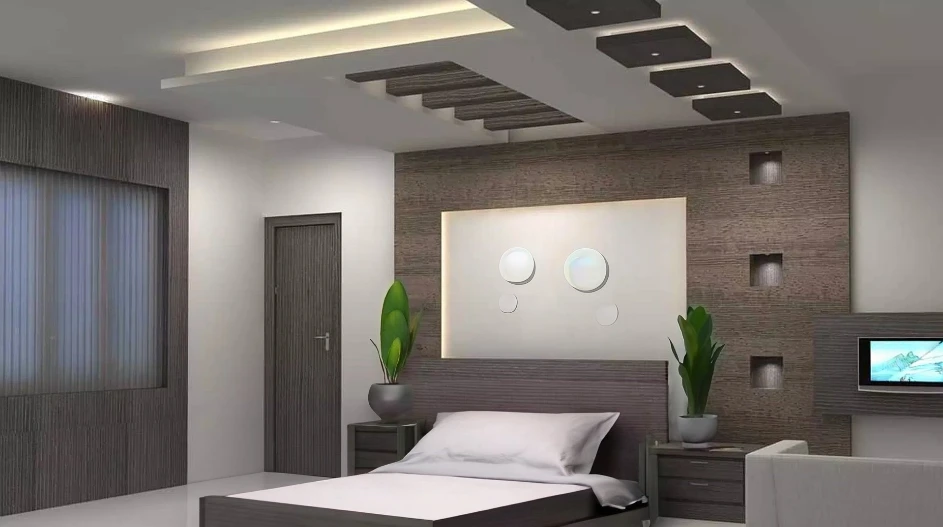
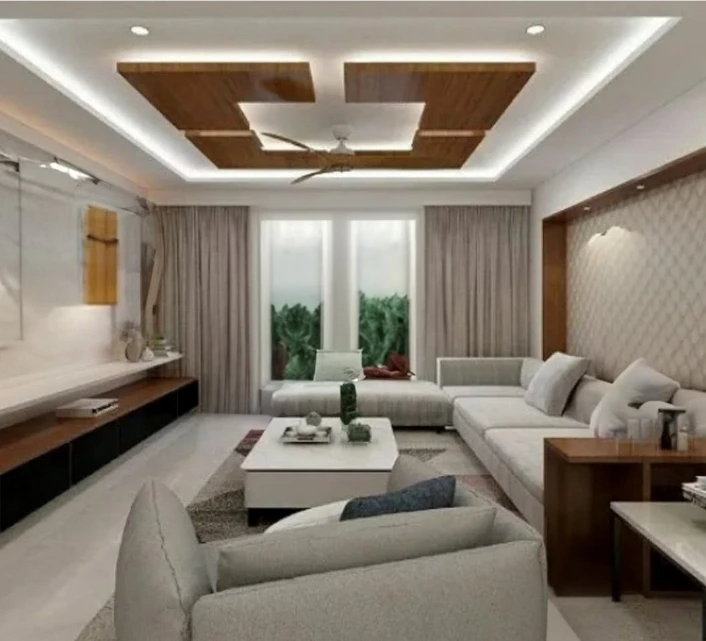

#2 The Advantages of False Ceilings
Enhanced Aesthetics
One of the primary benefits of These ceilings is their ability to add a touch of elegance to any space. They come in various designs, patterns, and materials, allowing endless creative possibilities. Whether it’s a modern, minimalist look or a classic, ornate design, these ceilings can significantly elevate the visual appeal of a room.
Improved Acoustics: False ceilings play a crucial role in soundproofing a room by dampening noise and reducing echo. Installing acoustic tiles or panels in the false ceiling helps absorb sound waves, creating a quieter and more pleasant environment. This is particularly advantageous in areas where noise control is essential, such as offices, classrooms, and home theaters.
Energy Efficiency
These ceilings can contribute to better energy efficiency in a room. Reducing the volume of air that needs to be heated or cooled helps maintain a comfortable indoor temperature. This leads to reduced energy consumption and lower utility bills, making them a cost-effective solution in the long run.
Concealment of Services
Another practical advantage of false ceilings is their ability to hide unsightly wires, cables, air conditioning ducts, and plumbing. This creates a neat, polished look and ensures a clutter-free space, promoting a sense of order and cleanliness
Versatile Lighting Options
False ceilings provide an excellent opportunity to incorporate various lighting fixtures and systems. LED strips, recessed lights, spotlights, and pendant lights can be strategically placed within the false ceiling to create different lighting effects. This allows for creating specific moods and atmospheres, transforming the room’s ambiance according to other occasions and preferences.
Easy Maintenance and Repairs
False ceilings are relatively easy to maintain and repair. Ceiling tiles can be removed and replaced easily, making it convenient to access the plenum space for any necessary repairs or upgrades. This ease of maintenance ensures that the false ceiling retains its shine and appearance for an extended period.
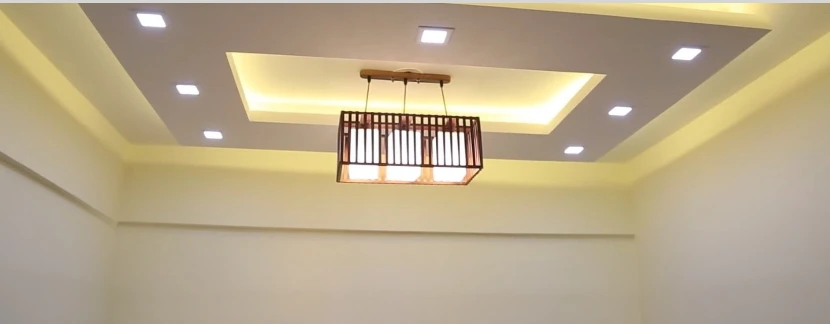
False ceilings offer a plethora of benefits that go beyond their aesthetic appeal. These ceilings are a valuable addition to any interior space, from improved acoustics and energy efficiency to cleverly concealing utilities. Uncover the ideal false ceiling material that suits your preference, whether it’s the versatility of gypsum, the contemporary touch of metal, the comforting warmth of wood, or the exceptional acoustic performance of mineral fiber. This perfect choice awaits, ready to elevate your space with unmatched beauty and enhanced functionality.
#3 Choosing the Right Material
Selecting the appropriate false ceiling material is critical to achieving your space’s desired look and functionality. In this article, we will explore the different ceiling materials available in the market and help you understand their unique characteristics and benefits. By the end of this guide, you’ll be well-equipped to decide on the best ceiling material for your specific requirements.
Gypsum False Ceilings
Characteristics:
Gypsum false ceilings are made from gypsum boards, a lightweight and fire-resistant material.
They are available in various thicknesses, allowing for flexibility in design and construction.
Gypsum boards are easy to cut and shape, making them ideal for intricate designs and customized solutions.
Benefits:
Versatility: Gypsum ceilings offer versatile design options, allowing for the creation of unique patterns and textures.
Easy Installation: The lightweight nature of gypsum boards makes installation relatively quick and straightforward.
Acoustic Properties: Gypsum boards have excellent sound absorption capabilities, making them suitable for soundproofing.
Metal False Ceilings
Characteristics:
Metal false ceilings are typically constructed from aluminum or steel panels.
They come in various finishes, including matte, glossy, or perforated patterns, adding a modern and contemporary touch to the space.
Metal ceilings are known for their durability and resistance to moisture and humidity.
Benefits:
Durability: Metal false ceilings are long-lasting and can withstand harsh environmental conditions, making them suitable for indoor and outdoor applications.
Low Maintenance: These ceilings are easy to clean and maintain, making them an excellent choice for high-traffic areas.
Reflective Properties: Metal ceilings can enhance lighting efficiency by reflecting light and brightening the room.
Wood False Ceilings
Characteristics:
Wood ceilings add a touch of warmth and natural charm to any space.
They are available in various wood types, each offering distinct grain patterns and colors, allowing for different design options.
Wood panels can be installed in linear, grid, or even 3D configurations, providing a sense of texture and dimension to the ceiling.
Benefits:
Aesthetics: Wood false ceilings exude elegance and sophistication, adding a luxurious appeal to the room.
Sustainability: Opting for sustainably sourced wood promotes eco-friendly practices and enhances the overall environmental value of your space.
Insulating Properties: Wood has natural insulating properties, providing a comfortable indoor environment.
Mineral Fiber False Ceilings
Characteristics:
Mineral fiber false ceilings are composed of mineral wool and other fibers, making them environmentally friendly.
They are available in various textures and finishes, providing options for acoustic performance and design preferences.
Mineral fiber panels are fire-resistant and have good thermal insulation properties.
Benefits:
Acoustic Performance: Mineral fiber false ceilings offer excellent sound absorption and noise reduction capabilities, making them ideal for spaces that require good acoustics.
Fire Safety: Their fire-resistant properties make mineral fiber ceilings a safe choice for commercial and industrial applications.
Moisture Resistance: These ceilings can withstand humidity and moisture, making them suitable for areas prone to dampness.
Choosing the suitable ceiling material is crucial to achieving your space’s desired aesthetics, functionality, and performance. Consider each material’s unique characteristics and benefits, and match them with your specific requirements and design vision.
#4 Creative Design Trends for False Ceilings
As interior design trends evolve, false ceilings are a canvas for creativity and innovation. This article will explore the latest creative design trends for false ceilings that can transform your space into a stunning visual masterpiece. From captivating patterns to bold colors and unique textures, these trends offer endless possibilities for elevating the aesthetics of any room.
Incorporating Intricate Patterns
Gone are the days of plain, monotonous false ceilings. Designers and homeowners embrace intricate patterns to add depth and dimension to the overhead space. Geometric patterns, floral motifs, and abstract designs are becoming increasingly popular. These patterns can be achieved using various false ceiling materials, such as gypsum, metal, or wood, and offer any room a sophisticated and modern touch.
Playing with Colors and Textures
Creative use of colors and textures can completely transform the look and feel of a false ceiling. Instead of sticking to conventional white or neutral tones, designers are experimenting with bold and vibrant colors to create eye-catching statements. Combining contrasting colors and textures can add drama and visual interest to the ceiling, making it the room’s focal point.
Embracing Nature-Inspired Designs
Bringing nature indoors is a timeless design trend that continues to gain popularity. Nature-inspired false ceiling designs, such as leaf patterns, vine motifs, or even celestial themes like clouds and stars, can create a serene and calming ambiance. These designs bring a sense of tranquility and harmony to the space, making it a welcoming sanctuary.
Incorporating LED Lighting
LED lighting is energy-efficient and offers endless possibilities for creative false ceiling designs. Integrating LED strips or fixtures within the false ceiling can create striking visual effects. Cove lighting, where LED strips are hidden within a recessed cavity along the room’s perimeter, can make a soft and inviting glow, adding to the overall ambiance.
Emphasizing 3D Effects
Three-dimensional false ceilings are gaining momentum to add depth and drama to a room. 3D elements range from subtle geometric patterns to elaborate sculptures or relief designs. These visually striking effects can transform an ordinary room into a captivating, awe-inspiring space.
Mixing Materials for a Contemporary Look
Designers are breaking the mold by combining false ceiling materials to achieve a contemporary and eclectic look. Mixing wood and metal or incorporating decorative elements like mirrors or glass can result in a one-of-a-kind false ceiling design that perfectly complements the interior decor.
As design trends evolve, false ceilings remain a dynamic element in interior design, offering endless opportunities for creativity and personal expression. Whether you prefer intricate patterns, vibrant colors, or nature-inspired designs, there’s a false ceiling trend that can bring your vision to life.
#5 Enhancing Ambiance with Cove Lighting
We will explore the concept of cove lighting, understand its impact on the ambiance, and provide a step-by-step guide to installing cove lighting in your false ceiling to elevate the overall mood of your room.
Understanding Cove Lighting and Its Impact on the Ambiance.
Cove lighting involves the installation of LED strips or fixtures within a concealed, recessed cavity along the perimeter of a room or false ceiling. The light emitted by these fixtures is directed towards the top or downwards along the walls, creating a soft and indirect illumination that diffuses throughout the space.
The gentle and subtle glow produced by cove lighting remarkably impacts the room’s ambiance. It eliminates harsh shadows and reduces glare, creating a soothing environment perfect for relaxation and unwinding. Cove lighting adds a touch of elegance and sophistication, instantly elevating the space’s overall aesthetic.
#6 Step-by-Step Guide to Installing Cove Lighting in Your False Ceiling
Design Planning
Before you begin the installation process, carefully plan the cove lighting design. Decide on the areas where you want to install the cove lighting and whether you want a single color or RGB (color-changing) lighting scheme to create different moods.
Gather Materials
Obtain the LED strips or fixtures suitable for cove lighting. Flexible LED strips are ideal for curving around corners and irregular shapes, while rigid strips work best for straight sections.
Prepare the False Ceiling
Ensure the false ceiling is clean and free from debris or dust. Create a channel or groove along the perimeter where the LED strips will be placed. You can use a router or a similar tool for this purpose.
Install LED Strips
Carefully place the LED strips into the channels, securing them with adhesive or clips. Ensure the strips are aligned uniformly to ensure consistent lighting throughout the cove.
Wiring and Connections
Use the appropriate wiring to connect the LED to a power supply. If you use RGB LED strips, connect them to a controller that allows you to achieve different color effects.
Testing
Before completing the false ceiling installation, test the cove lighting to ensure that all the LEDs work correctly and that the lighting effect meets your expectations.
Complete the False Ceiling Installation
Once you are satisfied with the cove lighting, finish the false ceiling installation according to the manufacturer’s instructions.
Final Adjustments
Make any necessary lighting intensity or color adjustments to achieve the desired ambiance and mood.
#7 Tips for Choosing the Right Type of LED Lights for Optimal Results
Brightness Level
Consider the desired brightness level based on the room’s function and the atmosphere you want to create. Dimmable LED strips offer flexibility to adjust the lighting intensity for different occasions.
Color Temperature
Choose the appropriate color temperature of the LED strips to match the desired ambiance. Warm white tones (around 2700K) create a cozy and inviting atmosphere, while cooler white tones can add a modern and contemporary feel.
RGB or Single Color
Decide whether you want a single color cove lighting or RGB to allow for color-changing effects.
By following this step-by-step guide and considering these tips, you can create a captivating ambiance with cove lighting in your false ceiling, transforming your space into a haven of serenity and beauty. Whether it’s a cozy corner in your living room or a soothing bedroom retreat, cove lighting can add magic to every part of your home.
#8 Creating Depth and Dimension with 3D False Ceilings
3D false ceilings are an innovative design trend that adds depth, drama, and uniqueness to any room. The concept of 3D false ceilings and understanding their impact on space per guide guidance on incorporating 3D elements without overwhelming the room.
Introducing 3D False Ceilings and Their Impact on Space Perception
3D false ceilings go beyond the conventional flat surfaces, offering an illusion of depth and dimension to the overhead space. These ceilings feature three-dimensional elements such as geometric patterns, abstract designs, or realistic imagery like clouds or stars. The visual effect creates a captivating and awe-inspiring ambiance, making the room appear more extensive and spacious.
Adding 3D elements to the false ceiling creates a sense of grandeur and artistic expression. The interplay of light and shadow on the 3D patterns further enhances the visual appeal, adding dynamism and interest to the ceiling.
Exploring Different 3D Patterns and Designs for False Ceilings
Regarding 3D false ceiling designs, the possibilities are virtually limitless. Here are some popular 3D patterns and designs to consider:
Geometric Patterns: Incorporate intricate geometric shapes, such as hexagons, cubes, or pyramids, to create a modern and chic ambiance.
Floral and Nature Motifs: Embrace the beauty of nature with 3D floral patterns or motifs like leaves, vines, or even butterflies.
Abstract Art: For a bold and artistic statement, opt for abstract 3D designs that capture attention and spark conversation.
Mural Ceilings: Commission a custom 3D mural on your false ceiling for a personalized and unique touch.
How to Incorporate 3D Elements Without Overwhelming the Room
While 3D false ceilings are captivating, striking the right balance is essential to avoid overwhelming the space. Here are some tips for the harmonious integration of 3D elements:
Choose the Right Design Scale
Consider the room’s size and height when selecting the 3D design. Opt for smaller, more subtle patterns in smaller rooms to avoid overpowering the space.
Accentuate a Focal Point
Use 3D elements to highlight a specific area of the room, such as above the dining table or bed, creating a focal point that draws the eye.
Consider Lighting
Plan the lighting carefully to enhance the 3D effect. Installing spotlights or uplights can cast interesting shadows and emphasize the 3D patterns.
Coordinate with Overall Decor
Ensure that the 3D false ceiling design complements the overall interior decor of the room. The colors and style should blend harmoniously with the furniture and walls.
3D false ceilings offer a captivating and innovative way to elevate the aesthetics of your space, creating a dimensional and enchanting overhead view. Whether you prefer intricate geometric patterns or nature-inspired motifs, incorporating 3D elements in your false ceiling will leave your guests in awe.
#9 Soundproofing Your Space with False Ceilings
Soundproofing is a crucial consideration in creating a peaceful and comfortable environment within a room. In this article, we will explore how false ceilings can play a significant role in soundproofing your space, share best practices for achieving effective sound reduction, and guide you in choosing suitable acoustic tiles and materials to create a serene sanctuary.
The Role of False Ceilings in Soundproofing
The additional layer created by these ceilings helps dampen sound waves, preventing them from bouncing off the hard surfaces and causing echoes. This is particularly beneficial in rooms with high ceilings, where sound can reverberate and create unwanted noise.
You can significantly improve the room’s acoustic properties by incorporating sound-absorbing materials within These ceilings, such as acoustic tiles or panels. This is especially important in spaces where noise reduction is essential, such as offices, conference rooms, home theaters, and bedrooms.
Best Practices for Soundproofing with False Ceilings
Choose Acoustic Tiles or Panels: Opt for acoustic tiles or panels specifically designed for sound absorption. These tiles are made of materials that effectively absorb sound waves, reducing echo and noise.
Thickness and Density: Consider the thickness and density of the acoustic tiles. Thicker and denser tiles offer better sound absorption properties. However, ensure that the false ceiling can support the weight of the chosen tiles.
Complete Coverage: Aim for full coverage of the false ceiling with acoustic tiles to maximize soundproofing—attention to areas with high sound reflection, such as corners and near hard surfaces.
Seal Gaps and Joints: Properly seal gaps or joints between the acoustic tiles to prevent sound leakage. Air gaps can diminish the effectiveness of soundproofing efforts.
Combining Materials: Consider combining different sound-absorbing materials within the false ceiling to achieve optimal results. For example, using a combination of acoustic tiles, mineral wool, and other sound-absorbing materials can enhance soundproofing capabilities.
#10 Choosing Acoustic Tiles and Materials for Enhanced Noise Reduction
Mineral Fiber Tiles: Mineral fiber tiles are an excellent choice for soundproofing as they have superior sound absorption properties. They are also fire-resistant and offer thermal insulation.
Fiberglass Panels: Fiberglass panels are lightweight and offer exceptional sound absorption. They are a popular choice for soundproofing commercial spaces.
Wood Wool Panels: Wood wool panels add a unique texture to the false ceiling and provide good sound absorption.
Perforated Metal Panels: Perforated metal panels with sound-absorbing backing are an excellent option for a contemporary and industrial look
Soundproofing your space with false ceilings is a practical and effective way to create a peaceful and serene environment. By choosing suitable acoustic tiles and materials and following soundproofing best practices, you can significantly reduce noise and improve the overall acoustic quality of the room.
Whether you’re designing a home theater to enjoy movies without disturbing others, creating a productive workspace in a bustling office, or simply seeking a quiet haven in your bedroom ceiling design, soundproofing with false ceilings will undoubtedly elevate the comfort and functionality of your space. So, invest in soundproofing your space with these ceilings and enjoy the tranquility and peace of a well-designed and acoustically balanced room.
Conclusion
A false ceiling is not just an architectural element; it’s an opportunity to elevate the design of your space and create an enchanting ambiance. By carefully selecting materials, incorporating lighting, and utilizing creative design hacks, your false ceiling can become the focal point of any room, adding a touch of elegance and sophistication.
So, whether you’re redesigning your home, office, or any other space, embrace the possibilities of a false ceiling and let your creativity.

Pingback: 8 Spectacular Ceiling Designs That Redefine Your Living Space